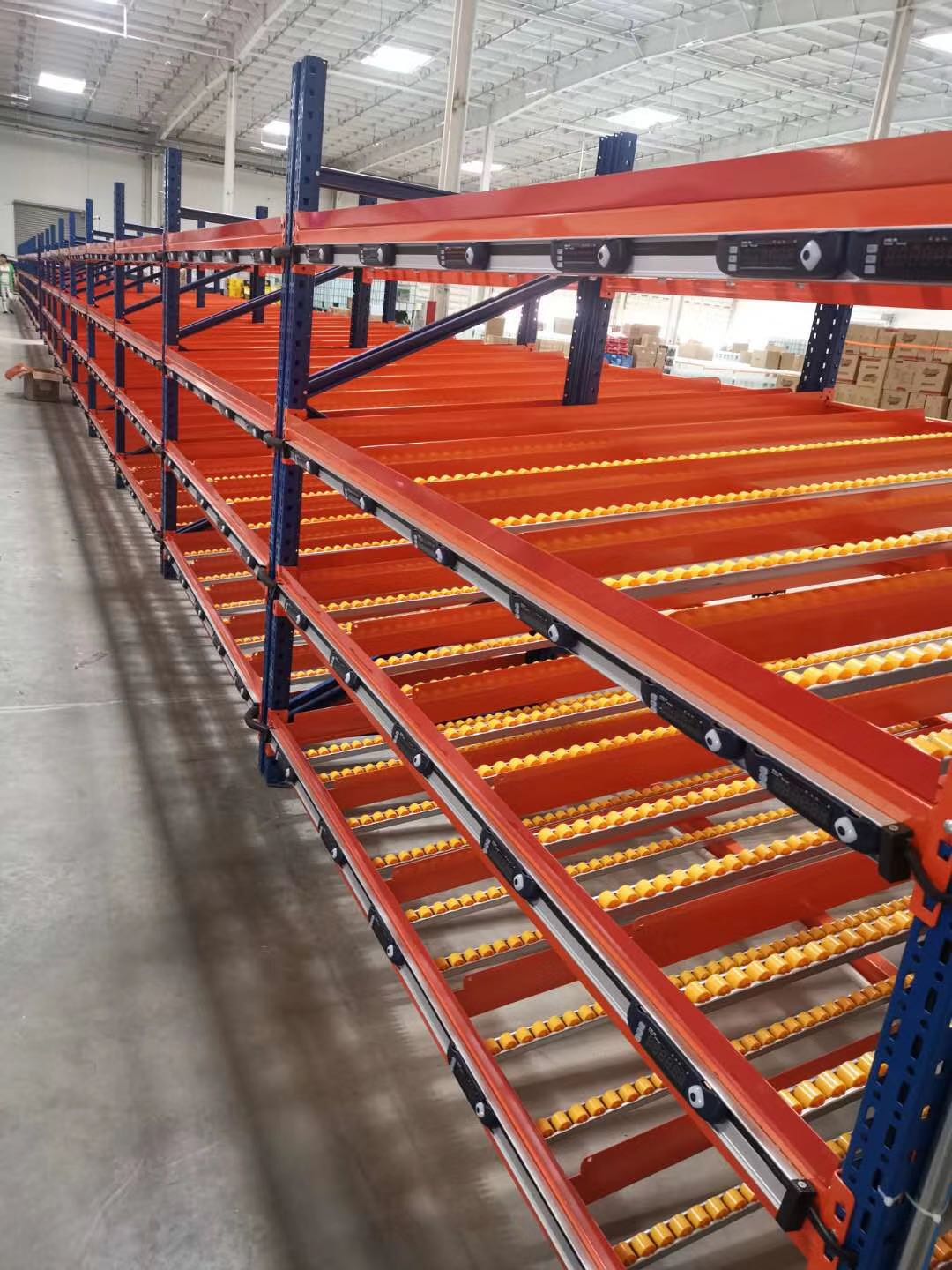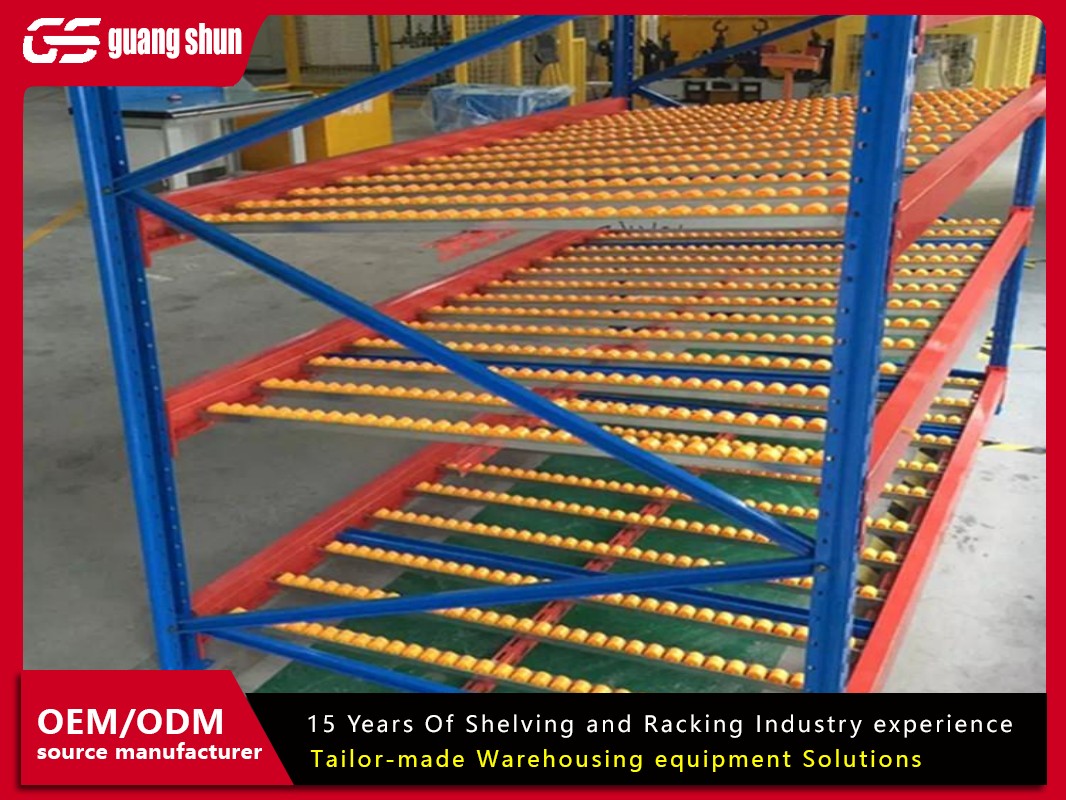In the relentless pursuit of warehouse efficiency and cost reduction, maximizing every square foot of available space is paramount. Enter mobile racking – a transformative storage solution designed to dramatically increase storage density without expanding your building's footprint. This innovative system moves entire rows of shelving on rails, eliminating the need for permanent aisles between every rack. This guide delves deep into the world of mobile racking, exploring its mechanics, benefits, applications, and critical considerations, empowering you to decide if it's the key to optimizing your storage operations.

What is Mobile Racking? (Understanding the Core Concept)
At its heart, mobile racking is a high-density storage system where racks are mounted on mobile carriages that glide along fixed floor rails. Unlike traditional static shelving where aisles are permanently fixed between rows, mobile racking consolidates aisles. Only one access aisle is created at a time, directly in front of the specific rack row needed. When access to a different row is required, the racks are moved laterally (manually, via a crank handle, or powered by an electric motor) to open up a new aisle, while the previous aisle disappears as the racks close together.
Imagine multiple rows of sturdy shelving sitting on what is essentially a set of train tracks. The entire row moves as a single unit. This ingenious design principle is what allows mobile racking to achieve exceptional space utilization, often increasing storage capacity by 50% to 85% compared to conventional static racking systems. The core components include the base frames with integrated wheels, robust floor rails, a reliable drive mechanism, and essential safety features like aisle-end safety barriers and interlocks.
How Mobile Racking Works (The Mechanics of Movement)
Understanding the operational flow is crucial:
1.Consolidated State: When not in use, the mobile racking rows are compacted together, minimizing the space occupied by aisles. Typically, only one main access aisle remains open at the system's end.
2.Accessing a Row: An operator needs to access pallets or items stored in a specific row.
3.Opening the Aisle: Using a manual crank handle attached to the end carriage or activating an electric motor (common in larger systems), the operator initiates movement. The entire row of racks smoothly glides along the embedded floor rails.
4.Aisle Creation: As the selected row moves away from the compacted mass, it creates an access aisle precisely where needed. Safety sensors prevent movement if obstacles are detected.
5.Retrieval/Storage: The operator, typically using a forklift or order picker, enters the newly created aisle to store or retrieve items from that specific rack row.
6.Closing the Aisle: Once the task in that aisle is complete, the operator moves the rack row back into its compacted position, closing off that aisle. The system is now ready for access to another row.
The choice between manual and powered movement depends on the system's size, weight, frequency of access, and budget. Powered mobile racking systems offer significant advantages in speed and operator effort reduction for high-throughput or large-scale installations.
The Unbeatable Advantage: Space Optimization
The primary and most compelling benefit of mobile racking is its unparalleled ability to maximize storage density:
•Massive Capacity Gains: By eliminating multiple fixed aisles, mobile racking typically doubles (or more) the storage capacity within the same floor area compared to standard selective racking. This is revolutionary for facilities constrained by space or facing expensive expansion costs.
•Optimized Cube Utilization: It efficiently utilizes both the floor area and the vertical cube of the warehouse, making it ideal for storing a large number of SKUs, particularly slower-moving items.
•Reduced Building Costs/Footprint: The space savings achieved with mobile racking can delay or even eliminate the need for costly new warehouse construction or leasing additional space. Existing facilities can store significantly more without physical expansion.
•Ideal for High-Value Real Estate: In locations where real estate costs are exorbitant (e.g., urban centers, industrial parks), the space efficiency of mobile racking translates directly into substantial cost savings.

Applications: Where Mobile Racking Shines
Mobile racking is incredibly versatile but excels in specific operational scenarios:
•Archives and Document Storage: Perfect for libraries, medical records, legal documents, and corporate archives where high-density storage of infrequently accessed items is critical. Mobile racking efficiently handles boxes and files.
•Cold Storage Warehouses: Refrigerated and frozen storage space is extremely expensive to build and operate. The high-density nature of mobile racking minimizes the costly cubic footage needed for aisles, maximizing the storage of perishable goods and significantly reducing energy consumption per pallet stored.
•Storing Slow-Moving Inventory: Ideal for SKUs with lower pick frequency but requiring high storage volume. Mobile racking keeps these items accessible without dedicating vast areas to fixed aisles.
•Manufacturing Parts & MRO Stores: Storing a vast array of spare parts, raw materials, or maintenance supplies efficiently. Mobile racking organizes these items densely while keeping them accessible when needed.
•High-Value Goods: Provides secure, compact storage for valuable items, minimizing the physical footprint that needs high security.
•Consolidating Warehouses: Businesses looking to downsize facilities or consolidate multiple warehouses into one can leverage mobile racking to fit existing inventory into a smaller space.
Evaluating the Pros and Cons of Mobile Racking
Like any significant investment, mobile racking presents a balance of advantages and considerations:
Pros:
•Exceptional Space Savings: Up to 85% increased storage density vs. static racking (the core benefit).
•Increased Storage Capacity: Store significantly more pallets or items within the same footprint.
•Improved Inventory Control: Systems can be organized logically; only one access point reduces potential for confusion compared to multiple aisles.
•Enhanced Security: Compacted rows naturally restrict unauthorized access. Security doors can be added to aisles.
•Versatility: Adaptable to various load types (pallets, boxes, files) and heights. Can integrate with mezzanines.
•Reduced Operating Costs: Lower energy costs (especially in cold storage), potential reduction in property taxes/lease costs per pallet stored.
Cons:
•Higher Initial Investment: Mobile racking systems cost significantly more per pallet position than basic static racking due to the complex carriage and rail system. Consider it a long-term investment in space.
•Sequential Access: Only one aisle can be open at a time. This is not ideal for operations requiring simultaneous, random access to multiple SKUs across different rows constantly (highly dynamic picking environments).
•Access Time: There's a slight delay to open an aisle compared to instantly accessing a static rack (mitigated by powered systems).
•Floor Requirements: Requires a very level, strong concrete floor capable of supporting the concentrated loads and accommodating the embedded rails. Floor preparation adds to installation complexity and cost.
•Maintenance: The moving parts (wheels, bearings, drives, guides) require regular inspection and maintenance to ensure smooth, safe operation over the system's lifespan.
•Safety Systems: Sophisticated safety features (sensors, interlocks, barriers) are non-negotiable and add to the cost but are essential for operator safety.
Selecting and Implementing a Mobile Racking System
Implementing mobile racking successfully requires careful planning:
1.Thorough Needs Assessment: Analyze inventory profiles (SKU velocity, cube, weight), required throughput, access patterns, and growth projections. Is sequential access acceptable?
2.Detailed Load Analysis: Precisely determine the weight and dimensions of the pallets or items to be stored. This dictates the structural requirements of the mobile racking frames and the carriage capacity.
3.Comprehensive Site Survey: Critical! Assess floor flatness, load-bearing capacity, column locations, clear heights, sprinkler systems, lighting, and potential obstructions. Professional floor testing is usually mandatory.
4.Choosing Manual vs. Powered: Evaluate frequency of access, aisle length, load weights, and ergonomics. Powered systems offer speed and ease but at a higher cost.
5.Safety First: Prioritize systems with robust safety features: aisle-end barriers, safety light curtains or pressure sensors at the moving end, interlocks preventing multiple aisles opening, clear warning signage, and emergency stop buttons.
6.Supplier Selection: Partner with reputable, experienced mobile racking manufacturers and integrators. Check references, engineering capabilities, and after-sales service/support.
7.Professional Installation: Installation is complex, requiring precision for rail embedding and system alignment. Always use certified installers provided or approved by the manufacturer.
8.Operator Training: Comprehensive training on safe operation (especially aisle opening/closing procedures), understanding safety systems, and awareness of potential hazards is essential.
9.Maintenance Program: Establish a regular preventive maintenance schedule as per the manufacturer's recommendations to ensure longevity and safe operation.
Beyond the Basics: Advanced Mobile Racking Considerations
•Integration with Automation: Mobile racking can be integrated with semi-automated and fully automated storage and retrieval systems (AS/RS), where stacker cranes operate within the single open aisle, pushing density and efficiency even further.
•Mezzanine Integration: Mobile racking can be installed under mezzanine structures or even integrated into multi-level mezzanines designed with the moving racks in mind, maximizing vertical space.
•Specialized Configurations: Options exist for very long runs, systems handling exceptionally heavy loads, or configurations designed for specific industries like aerospace.
•Control Systems: Advanced powered systems may feature computerized controls for optimized aisle selection and movement tracking.
Is Mobile Racking Your Space-Saving Solution?
Mobile racking represents a powerful engineering solution to one of the most persistent challenges in warehousing and storage: space constraints. Its ability to dramatically increase storage density – often doubling or more the capacity within the same footprint – makes it a compelling investment for businesses struggling with high real estate costs, operating cold storage, managing extensive archives, or storing large volumes of slower-moving inventory.
While the initial capital outlay for a mobile racking system is higher than static alternatives and sequential access presents operational considerations, the long-term savings in space, energy (especially for cold storage), and potential avoidance of expansion costs deliver a compelling return on investment (ROI) for the right application. Careful assessment of your operational needs, inventory profile, site suitability, and commitment to safety and maintenance is crucial.
If your priority is maximizing pallet positions or storage units per square meter without building anew, mobile racking deserves serious consideration. It transforms static floor space into a dynamic, high-capacity storage asset, unlocking significant efficiency and cost-saving potential for businesses ready to embrace its innovative approach. Evaluate your needs, consult with experts, and discover if mobile racking is the key to unlocking your warehouse's full potential.







